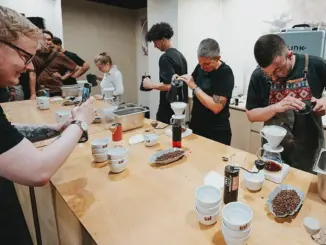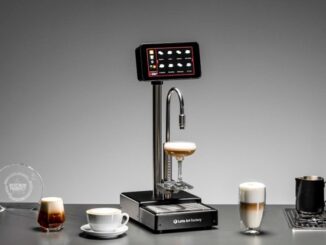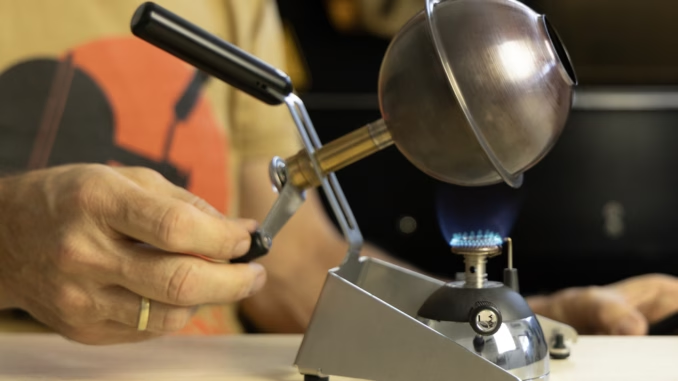
Join us as we test drive the innovative manual coffee roaster, guided by Greece’s 2025 Roasting Champion Argiris Fakos.
BY VASILEIA FANARIOTI
SENIOR ONLINE CORRESPONDENT
Featured photo courtesy of Naked Portafilter
Hungarian equipment boutique Naked Portafilter recently made waves with its innovative manual coffee roaster, the Roastino. Drawing inspiration from vintage roasters, Naked Portafilter aims to rekindle the joy of manual coffee roasting with the device, allowing coffee enthusiasts and professionals alike to have greater control over their roast profiles and, ultimately, their coffee.
Recently, I had the chance to dive into the art of coffee roasting with the guidance of Argiris Fakos, the 2025 National Roasting Champion of Greece, at DARG Coffee in Athens. Together, we explored the roast characteristics that the Roastino can deliver, and I’m eager to share my experience.
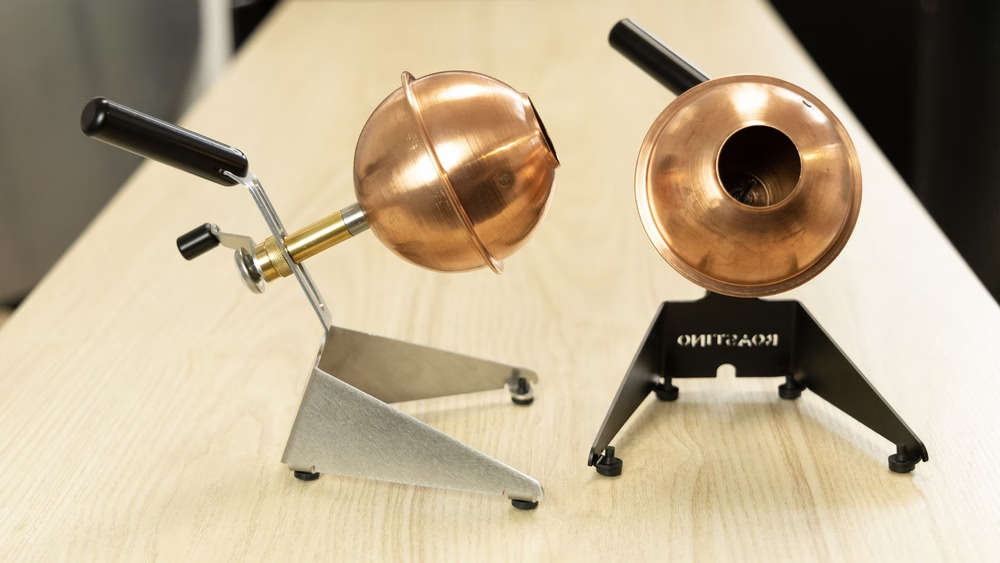
Unboxing: What’s Inside
Unboxing the Roastino reveals a thoughtfully designed product that reflects the care taken in its creation. The first thing that stands out about the roaster is its aesthetic simplicity paired with practical design. Here’s what you can expect in the box:
- Copper drum: The drum is designed for effective heat retention and even roasting, and its height is adjustable, making it versatile for use with various heat sources.
- Stainless steel base: A sturdy foundation ensures stability while roasting.
- Built-in thermometer: Simple yet essential, this thermometer allows for accurate temperature readings in both Celsius and Fahrenheit.
- Windshield add-on: This optional accessory enhances outdoor roasting and adds insulation.
- User manuals: Two QR codes are included within the box, leading to two manuals—one explaining how to assemble and maintain the machine, and the second explaining how to use it.
The Roastino’s design feels almost nostalgic, harkening back to the craftsmanship of vintage devices, yet enhanced with modern materials and engineering.
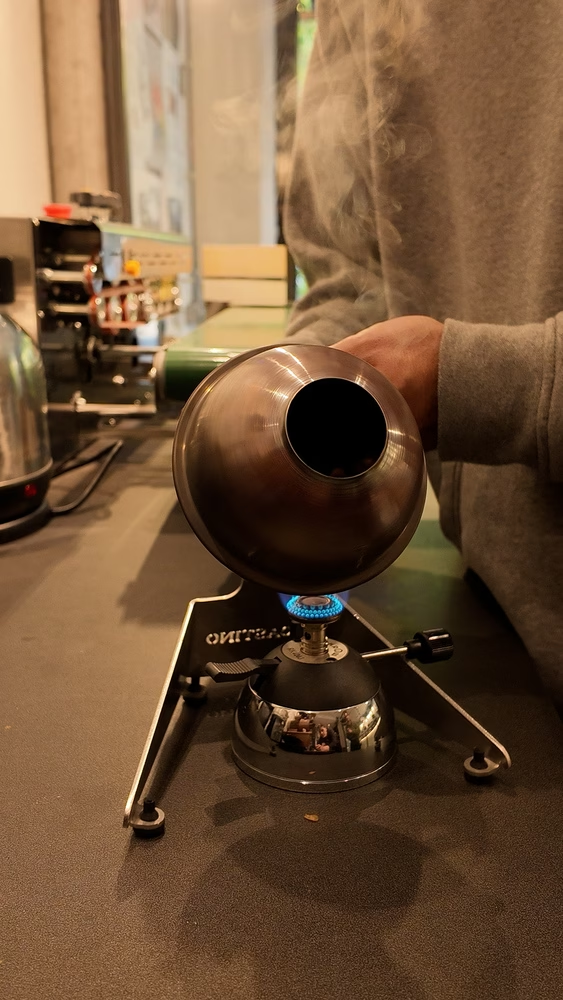
Prepping: Finding the Right Spot
Effective coffee roasting hinges on preparation. Argiris and I started by scouting the perfect location at DARG to set up the Roastino: a well-ventilated area with a flat surface. Here’s a breakdown of what we gathered to prepare for our roasting experience:
- Heat source: We decided on a Rekrow micro-burner for its controllable heat output, making it ideal for achieving consistent results.
- Batch size: We opted to start with 80 grams of a Brazilian natural for our filter coffee roast, keeping within the Roastino’s recommended capacity.
- Cooling tray: A metal tray was essential for cooling the beans swiftly after the roasting process.
- Timer: A stopwatch helped us keep track of each significant stage in the roasting process.
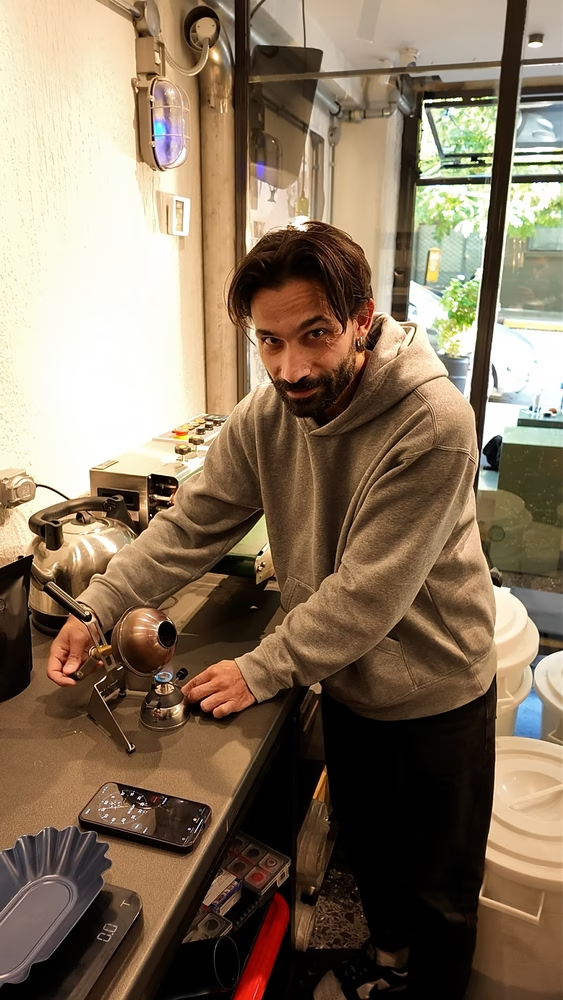
Testing the Roaster: First Crack at DARG
Once all of our tools were in place, it was time to roast. Following the provided instructions, we preheated the copper drum to a steady 90°C (194°F) while continuously rotating it. After this initial step, we loaded 80 grams of green beans into the drum and started the timer.
The rhythmic rotation of the drum was both mesmerizing and engaging. We did our best to maintain a speed of around 60 RPM, adjusting the gas flame to achieve the following critical temperature milestones:
- 3 min: Reached 150°C (302°F)
- 5 min: Hit 190°C (374°F)
- 7 min: Climbed to 210°C (410°F)
As the beans danced in the copper drum, the first crack was an exhilarating moment. It announced itself around eight minutes into the roast—a crucial point that guided us toward our desired roast profile. We then continued to monitor the development of the roast to achieve a light filter coffee flavor profile, aiming for a drop just after the first crack.
Once the desired roast was reached, we swiftly ejected the beans into the cooling tray and agitated them to bring down the temperature efficiently, preventing over-development. The aroma was enchanting, filling the room with hints of caramel and floral notes.

Roasting at Home
After our successful test drive at DARG, I decided to give the Roastino a shot at home with a focus on espresso. I set the roaster up in my kitchen and gathered all of the necessary tools to repeat the process I had gone through with Argiris.
First, I preheated the drum to 90°C once again. This time, I chose to roast 100 grams of green beans, aiming for a medium roast profile suitable for espresso extraction. The same temperature milestones we used during our test drive at DARG guided me through the process, and I mirrored the previous instructions.
As the beans spun in the copper drum, I eagerly awaited the moment of the first crack, which arrived just beyond the seven-minute mark, indicating that the roast was progressing smoothly. I let the roast develop a little longer, keeping a close eye on the clock before finally executing a drop just a minute and 30 seconds after the first crack, allowing me to achieve a medium roast.
Again, cooling the beans quickly in the cooling tray was a key step, and the result was a delightful aroma, rich with the promise of a complex espresso shot.
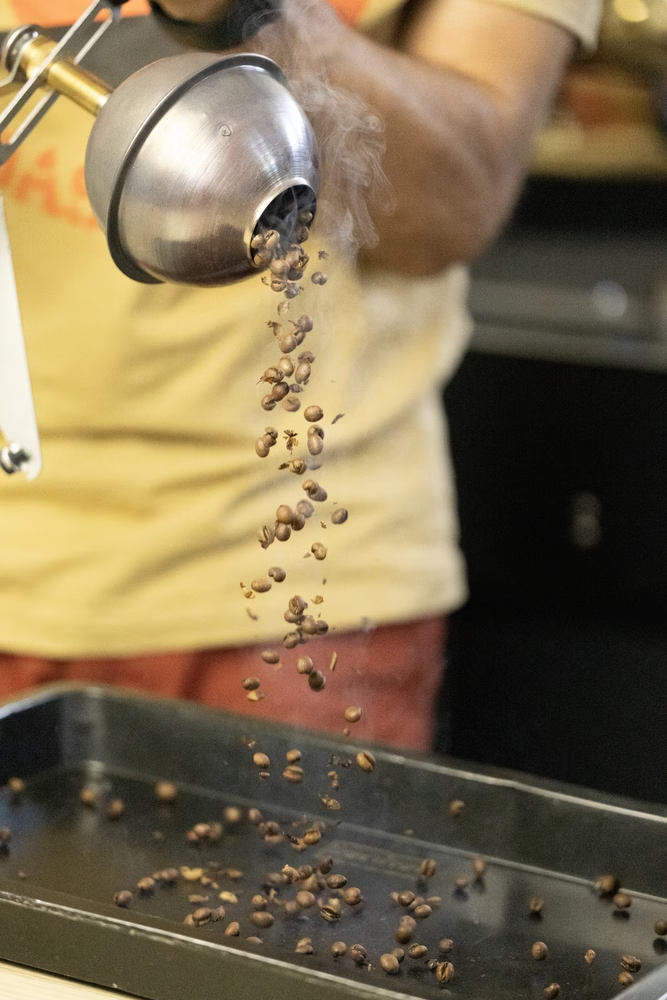
A Unique Manual Roasting Experience
The Roastino from Naked Portafilter delivers a manual-roasting experience that bridges traditional craftsmanship and modern coffee culture. With well-thought-out features and a charming design, it offers an engaging way to roast, ensuring precise control over the roasting process.
Argiris commented on the results, saying, “The Roastino yielded a very good result for a manual roaster. The copper material provides excellent heat conductivity, ensuring that the roast is very even throughout the process. Despite the manual operation, I found the results to be remarkably consistent. The rate of rise (RoR) was also really good, which is crucial for achieving precise roast profiles.”
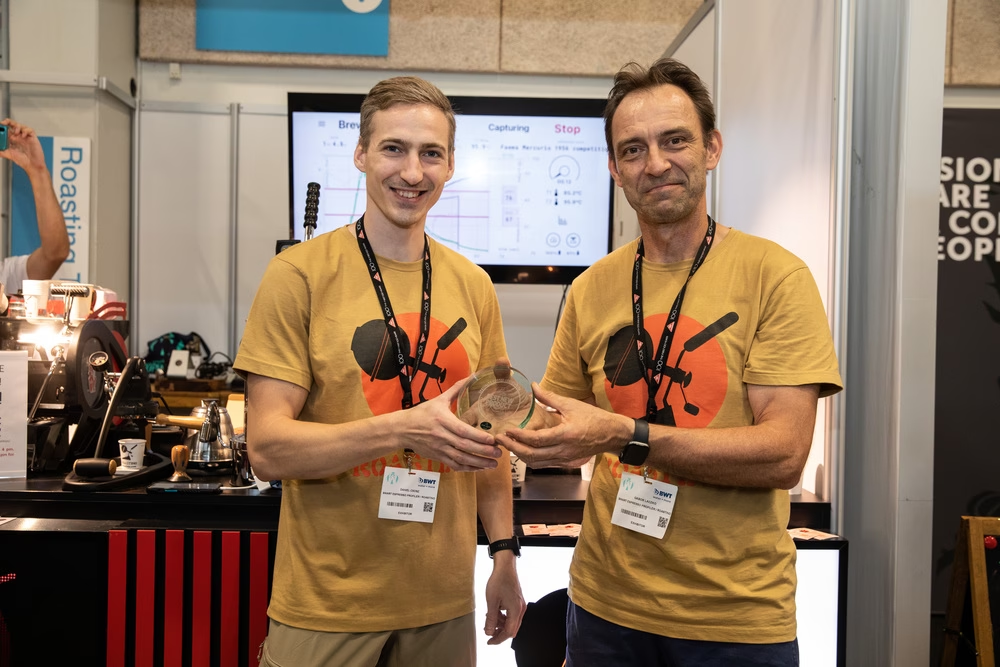
The Roastino is priced at $180 for the stainless-steel version, making it a reasonable option for those interested in exploring the art of coffee roasting. While it may not be the most automated solution on the market, its manual operation encourages a closer connection to the roasting process. This extra attention to detail can lead to a more immersive experience, allowing users to better understand the nuances of flavor development. It is also a solid choice for sample roasting, offering the opportunity to experiment with various roast profiles.
ABOUT THE AUTHOR
Vasileia Fanarioti (she/her) is a senior online correspondent for Barista Magazine and a freelance copywriter and editor with a primary focus on the coffee niche. She has also been a volunteer copywriter for the I’M NOT A BARISTA NPO, providing content to help educate people about baristas and their work.
Subscribe and More!
As always, you can read Barista Magazine in paper or digital format. Read the December 2024 + January 2025 issue for free with our digital edition.
And for more than three years’ worth of issues, visit our digital edition archives here.




